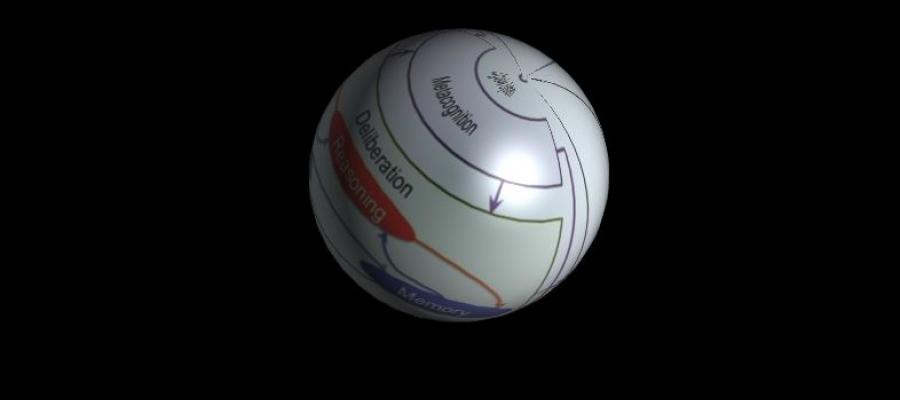

Reduction in Spanish Corporate TAX of Software development based on AI
Analyzed Modalities:
The creation of procedures developed in computer technology (software) is analyzed for its optimal commercialization, in the following way:
a) Through the perpetual, definitive, irrevocable, non-transferable and non-exclusive transfer for which the transferees pay a single fee for the enjoyment of the technology.
b) By means of a non-exclusive, non-transferable monthly assignment, for which the transferees pay a monthly fee during the months of enjoyment of the temporary assignment.
The price paid by the transferees does not correspond to the software itself, which in itself has little value, but to the secret scientific procedures that the software has implemented in it. These procedures are registered under the formula of industrial secret. The technology to be transferred incorporates an artificial intelligence system that involves a specialized advisory service that adapts case by case to the needs of the client.
Tax analysis and the right to reduction:
According to the modalities actually analyzed, in this case a contract has been signed by which the license to use temporarily or permanently a software containing procedures that allow theoretically determine various situations for marketing.
For the application of the reduction, the following requirements must be met:
a) That the assignee uses the rights of use or exploitation in the development of an economic activity and that the results of that use do not materialize in the delivery of goods or services by the assignee that generate tax-deductible expenses in the assigning entity, provided that, in the latter case, said entity is linked to the assignee.
b) The transferee does not reside in a country or territory with no taxation or qualified as a tax haven, unless it is located in a Member State of the European Union and the taxpayer accredits that the operation responds to valid economic reasons and that it carries out economic activities.
c) Where the same transfer contract includes ancillary services, the consideration corresponding to those services must be differentiated in that contract.
d) That the entity has the necessary accounting records to be able to determine the direct income and expenses corresponding to the assets to be transferred.
3. In the case of transfer of intangible assets, for the purposes of the provisions of this article, regardless of whether the asset is recognised in the balance sheet of the entity, income shall be understood to be the positive difference between the income for the financial year arising from the transfer of the right to use or exploit the assets and the amounts deducted therein by application of article 12.2 of this Law, and for those expenses for the financial year directly related to the asset transferred.
4. This reduction must be taken into account for the purposes of determining the amount of the total quota referred to in article 31.1.b) of this Law.
5. In no case shall income from the transfer of the right to use or exploit, or from the transfer of trademarks, literary, artistic or scientific works, including cinematographic films, of personal rights subject to transfer, such as image rights, computer programs, industrial, commercial or scientific equipment, or of any other right or asset other than those indicated in paragraph 1, be entitled to a reduction.
Jurisprudence of the Supreme Court
In accordance with the case law of the Supreme Court (inter alia, STS of 30 May 2002; of 19 December 2002 or of 2 October 1999), it is essential to distinguish contracts for the assignment or licensing of know-how from contracts for technical assistance, both of which are distinct from contracts for the transfer of technology.
In particular, the SC has defined know-how as 'the complement of what an industrialist cannot know by the mere examination of the product and the mere knowledge of the technique'. Doctrinally, "know-how" or "information relating to industrial, commercial or scientific experience" has been defined as information of an industrial, commercial or scientific nature, arising from previous experience, which has practical applications in the operation of a company and from the communication of which an economic benefit can be derived. By virtue of contracts for the assignment or licensing of know-how, one of the parties undertakes to communicate to the other party its specific knowledge and experience, not disclosed to the public, so that it can use them on its own, without the assignor or licensor intervening in the use that the assignee or licensee makes of the information provided.
For its part, according to the "TS" case law, "technical assistance is understood as the specialized aid that the trader or industrialist receives from a third party for the better performance of the activity that concerns him. Technical assistance may take the form of a wide range of services; (...) it may consist in the assumption of a phase (or part of a phase) of the process by the provider (...)". More particularly, it is defined as an atypical modality of the contract of lease of services regulated in article 1544 of the Civil Code by virtue of which "in the lease of works or services, one of the parties undertakes to execute a work or to render to the other a service for a certain price". In effect, by virtue of such a contract, one of the parties undertakes, on the basis of the usual knowledge of its profession, to do a work itself or to provide some service for the other party, thus being subject to an obligation of result.
OECD
In particular, in accordance with the comments to Article 12 of the OECD Model Convention, with regard to information relating to computer programming, it is considered as know-how or know-how only the information which constitutes the ideas and basic principles of the programme (logic, algorithms or programming techniques or languages), but not any other type of accessory information.
CONCLUSION
According to the foregoing, income from the transfer of use of the technology will not be eligible for the reduction provided for in Article 23 of the LIS, insofar as such income does not derive from the autonomous transfer of information constituting the ideas and basic principles of the software transferred, but from software which, by means of artificial intelligence, determines the application of a series of scientific procedures which guide the user in theoretically determining various processes. It follows that the transfer of software entails these ancillary benefits. Therefore, in so far as it concerns the transfer of an element of a purely ancillary nature which is inseparable from the main element, it must be subsumed in the latter, so that the latter cannot apply the tax incentive laid down in Article 23 of the LIS either.





















I had a really urgent problem in the middle of the summer that I needed to get fixed. I tried contacting a bunch of agencies but they were either unavailable, slow, had terrible service or were crazy expensive (one company quoted me 1000€!). Josep replied to me within 10 minutes and managed to submit my forms on the deadline and all for a great price. He saved my life - 100% recommend!